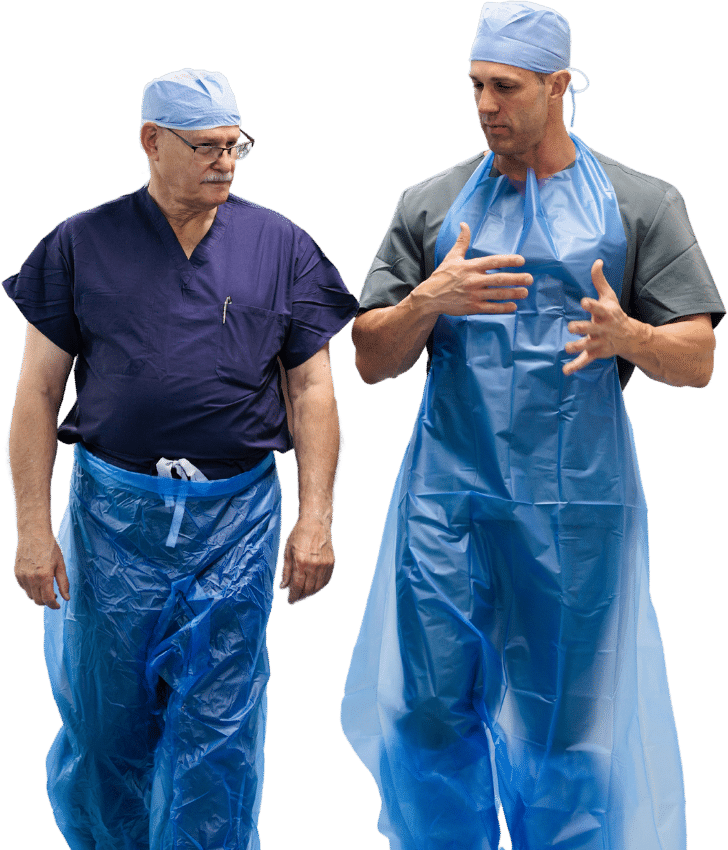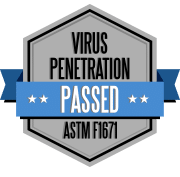When it comes to balancing the budget and quality of necessary orthopedic supplies, a purchasing manager’s job isn’t easy. You need to find the right products, at the right price, to provide the right protection for surgeons, staff, and patients in your facility.
Choosing products that are too expensive will bust your budget. Choosing too cheap products could risk bloodborne or fluidborne contamination, and may even make people seriously ill.
Keep your staff & patients safe & dry (goodbye, squishy shoes!) with the tips in this blog:
Budget Challenges for Hospitals & Surgical Centers
Every healthcare center faces budget challenges, and some can significantly impact a hospital’s financial health and overall operations. Here are some key factors that contribute to these challenges:
1. Unpredictable economic events: Hospitals are vulnerable to economic fluctuations such as recessions and inflation. These events can result in decreased patient admissions and reduced revenue, making it difficult for hospitals to maintain their budgets.
2. Changes to reimbursement and payment models: The healthcare industry is constantly evolving, and hospitals must adapt to changes in reimbursement and payment models. Reimbursement cuts or shifts from fee-for-service to value-based care can significantly impact a hospital’s budget.
3. New technologies: While new technologies can enhance patient care, they often come with high costs. Hospitals need to invest in the latest medical equipment and IT systems, which can strain their budgets and require careful financial planning.
4. Labor shortages: The shortage of healthcare professionals, particularly nurses and physicians, poses a significant challenge for hospitals. To attract and retain highly skilled staff, hospitals may need to offer competitive salaries and benefits, increasing their labor costs.
5. Mergers and acquisitions: In recent years, there has been a trend of hospital mergers and acquisitions. While these can lead to economies of scale and increased efficiency, they also come with integration challenges and potential financial risks.
6. The cost and availability of PPE: As the COVID-19 pandemic showed the world, having access to a ready supply of critical PPE and disposable medical clothing is incredibly important. When the world is in a crunch, prices skyrocket and your hospital’s budget suffers.
Managing these budget-related challenges requires strategic financial planning, cost-control measures, and proactive decision-making.
Budgeting for Supply Costs
As an orthopedic hospital, there are several supply costs that you should budget for. These costs are essential for ensuring patients’ and healthcare providers’ safety and well-being. Some key supplies to consider are:
Disposable Medical Equipment: Orthopedic procedures often require the use of disposable equipment, such as syringes, catheters, and dressings. Budgeting for these items is crucial to maintain a high standard of patient care.
Medical Protective Clothing: Surgeons and healthcare providers require specialized protective clothing, such as gowns and shoe covers, to prevent contamination during surgeries or other procedures. Allocating funds for these garments is essential for maintaining a sterile operating environment.
It’s important to regularly assess and update these budgets to account for changes in supply prices and suppliers.
Balancing Cost vs Quality for Medical Protective Clothing
When it comes to medical protective clothing, finding the right balance between cost and quality is crucial. Healthcare professionals rely on these garments to protect themselves and their patients from various risks, including infectious diseases.
However, you also need to manage your hospital expenses effectively. It’s essential to strike a balance between the cost of these garments and the level of protection they provide. When you’re considering the balance of cost vs. quality, there are a few things to think about:
1. Material and Durability:
Choosing the right material for medical protective clothing is crucial. Your shoe covers, aprons, and gowns should be fluid impervious, tear-resistant, and capable of providing adequate protection against pathogens and other potentially harmful substances. Choose protective clothing made from >2ml polyethylene blend materials.
2. Safety Standards and Certifications:
Ensuring that the protective clothing meets safety standards and certifications is of utmost importance. Look for garments that comply with industry regulations and certifications, such as those set by the Occupational Safety and Health Administration (OSHA) or the American Society for Testing and Materials (ASTM).
3. Comfort and Fit:
Medical protective clothing must be comfortable and well-fitting to allow healthcare professionals to perform their duties without hindrance. Consider garments that offer features like adjustable closures, breathable fabrics, and ergonomic designs. Choose one-size-fits-all gowns, aprons, shoe covers, coveralls, and jumpsuits to save the cost of stocking multiple sizes of each option.
Finding cost-effective solutions for medical protective clothing involves considering the total cost of ownership. While cheaper options may seem appealing initially, they may require more frequent replacements or lack the necessary features, resulting in additional expenses over time. Compare prices while considering the overall quality and durability to make an informed decision that optimizes cost and effectiveness.
Balancing cost and quality results in a win-win situation, promoting the well-being of both staff and patients.
Low Cost, Low Quality: The Hidden Dangers of Inexpensive PPE
When it comes to purchasing personal protective equipment (PPE) and medical protective gear, opting for a low-cost, but perhaps poorly made, product may seem like a tempting choice. After all, it may save some money upfront. However, it’s crucial to consider the potential drawbacks and long-term consequences that come with this decision.
Pros:
1. Cost savings: The primary advantage of inexpensive PPE is the immediate cost savings it offers. These products often have a lower price tag than high-quality alternatives.
Cons:
1. Reduced effectiveness: Poorly made PPE may not provide the level of protection required in healthcare settings. Inadequate materials, design flaws, and improper fit can compromise its efficiency, leaving healthcare workers vulnerable to various hazards.
2. Increased risk of injuries and illnesses: Substandard PPE can fail to shield against injuries, exposure to contaminants, and infectious diseases. This puts healthcare workers in danger and may result in long-term health consequences for them, their colleagues, and patients.
3. Frequent replacement: Low-quality PPE tends to wear out quickly, necessitating more frequent replacements. This can significantly impact the hospital’s budget, as the expenses for purchasing additional PPE will add up over time.
4. Lower employee satisfaction: Uncomfortable, ill-fitting PPE can increase discomfort and decrease employee satisfaction. This, in turn, may affect morale, productivity, and retention rates within the healthcare workforce.
While the initial price of low-cost PPE may be appealing, the potential risks and drawbacks likely outweigh the short-term cost savings.
High Cost, Good Quality
When it comes to purchasing personal protective equipment (PPE) and medical protective clothing for hospitals, there are both pros and cons to consider when opting for expensive, well-made products.
Pros:
1. Enhanced Protection: High-cost PPE often comes with advanced features and materials that provide superior protection against hazardous substances and infectious diseases. This can help minimize the risk of healthcare workers getting infected and ensure their safety.
2. Durability: Expensive PPE is typically made with high-quality materials, making it more durable and long-lasting. This means that it can withstand frequent use and rigorous decontamination processes, reducing the need for frequent replacements.
3. Comfort and Fit: Well-made PPE often offers better comfort and fit, allowing healthcare workers to perform their duties more efficiently and with less discomfort. This can contribute to their overall well-being and productivity.
Cons:
1. Cost: The main drawback of purchasing high-cost PPE is its impact on a hospital’s budget. Expensive PPE can significantly increase the overall expenditure, especially when considering the need for bulk purchases to accommodate a large number of healthcare workers.
2. Maintenance and Replacement Costs: While well-made PPE may last longer, it often requires specific care and storage, which can incur additional costs. Additionally, if a hospital invests heavily in costly PPE, the replacement costs may become burdensome when the time comes to update the equipment due to wear and tear or changes in safety standards.
The Goldilocks Zone: Moderate Cost, High Quality
When it comes to balancing your PPE budget, finding products that fall into the “Goldilocks Zone” is the best strategy. These products offer a perfect combination of high quality and moderate cost.
The Goldilocks Zone, to steal a phrase from our friends at NASA, refers to the “habitable zone” of a certain area. For your hospital, that habitable zone is where you get PPE products that are neither too cheap to be trusted nor too expensive to budget.
Here’s how to choose a PPE supplier who helps you strike that balance between cost and quality:
How to Choose PPE Suppliers Who Balance Cost & Quality
Balancing cost and quality becomes a top priority as you want to protect your surgical staff and patients without breaking the bank. In this blog, we will discuss some key factors to consider when selecting PPE suppliers who can strike the right balance between cost and quality.
To ensure your selected PPE suppliers meet the necessary quality standards, request samples of their products. Evaluate the comfort, fit, and durability of the PPE firsthand. Additionally, verify that the products meet ASTM’s F1671 test standards for fluid impermeability.
Here are three more factors to consider:
Manufacturer Location
Choosing a PPE manufacturer located in North America offers significant advantages for hospitals, particularly in terms of order turnaround time and cost.
When it comes to order turnaround time, having a manufacturer nearby means that hospitals can expect quicker delivery of their PPE supplies. This is especially important during times of high demand or emergencies when every minute counts. This turnaround time was especially important during the COVID-19 pandemic.
With a North American manufacturer, the time spent on shipping and customs clearance is reduced, resulting in faster access to essential PPE products. This proximity and speed of shipping also means you can order smaller quantities, more often, if that suits your cash flow and storage needs.
In addition to faster delivery, opting for a North American manufacturer can also lead to cost savings. Working with a local manufacturer can often result in lower production costs as compared to overseas suppliers of equivalent quality. Reduced transportation costs and production expenses ultimately translate into more affordable PPE solutions for hospitals.
Customer Feedback & Product Development Process
Choosing a PPE supplier who values (and really applies!) customer feedback should be a key consideration when choosing a supplier that fits your budget. By actively seeking input from customers and incorporating their suggestions, suppliers can enhance their products and meet the specific needs of users without the high costs of trial and error. That savings gets passed on to you.
One key benefit of customer feedback is the identification of areas for improvement. Through feedback, suppliers can gain valuable insights into what features or aspects of their products can be enhanced, allowing them to make necessary adjustments. The result is a product that works better in the real world.
Read the story | By Surgeons, For Surgeons: Developing Sloan Medical Products
By actively applying customer feedback, suppliers can avoid costly mistakes and ensure that their products are of the highest quality and best use to your facility.
Flexible Order Options
Flexible order options for PPE can greatly assist hospitals in managing their budgets effectively. By offering various ways to order, hospitals can choose the most cost-efficient method and ensure they get the best prices for their personal protective equipment.
One option is to order directly from the manufacturer. This can often lead to lower prices as it cuts out the middleman. By dealing directly with the manufacturer, hospitals may have the opportunity to negotiate pricing and bulk purchasing discounts. This method allows hospitals to have more control over their procurement process and tailor it to their budgetary needs.
Another option is to order through your hospital or health system’s approved distributor. Many hospitals have established relationships with distributors who provide reliable and timely delivery of PPE. Ordering through an approved distributor can provide hospitals with the convenience of a streamlined procurement process. Distributors often offer competitive pricing and can provide access to a wide range of PPE products from multiple manufacturers.
One-Size-Fits-All Inventory
An often underutilized method, one-size-fits-all PPE can help streamline your procurement process, solve storage issues, and provide cost savings compared to stocking multiple sizes of every option.
Not only does this approach save your healthcare facility money, but it also improves efficiency. Surgical staff can quickly, and easily access the inventory they need without having to search through various sizes. This helps to streamline workflow and reduce time wasted on inventory management.
Furthermore, a one-size-fits-all inventory ensures that all of your staff members are adequately protected. By investing in a single option with flexible sizing built in, you can guarantee that the items fit properly and provide the necessary level of protection.
Compare Your PPE Options With This Guide
Choosing the right personal protective equipment options for orthopedic hospitals and surgical centers can be a massive undertaking. Unlike great surgical gowns, there is no one-size-fits-all solution for every healthcare facility.
Use this comparison guide to compare your options for medical protective clothing side by side to easily identify which PPE will best suit your facility’s needs.





